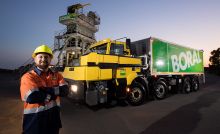
Caterpillar has been hit particularly hard by the drop in mining activity and the drop in the oil price. Its underground and surface mining activities have been deeply effected by the slump in demand as have its oil sector activities in Russia and Canada.
For 2015, Caterpillar’s sales and revenues outlook has weakened, with 2015 sales and revenues now expected to be about US$48 billion, or $1 billion lower than the previous outlook of about $49 billion. For 2016, sales and revenues are expected to be about 5% below 2015.
Key steps planned by the company include an expected permanent reduction in Caterpillar’s salaried and management workforce, including agency, of 4,000 – 5,000 people between now and the end of 2016, with most occurring in 2015, and with a total possible workforce reduction of more than 10,000 people, including the contemplated consolidation and closures of manufacturing facilities occurring through 2018.
The company will offer a voluntary retirement enhancement program for qualifying employees, which will be completed by the end of 2015.
Slightly less than half of the $1.5 billion of cost reduction is expected to be from lower Selling, General and Administrative (SG&A) costs. The reduction in SG&A will largely be in place and effective in 2016 and occur across the company.
The remaining cost reductions are expected to come from lower period manufacturing costs, including savings from additional contemplated facility consolidations and closures, which could impact more than 20 facilities and slightly more than 10% of our manufacturing square footage. A portion of these cost reductions are expected to be effective in 2016, with more savings anticipated in 2017 and 2018.
“We are facing a convergence of challenging marketplace conditions in key regions and industry sectors – namely in mining and energy,” said Doug Oberhelman, Caterpillar chairman and CEO. “While we’ve already made substantial adjustments as these market conditions have emerged, we are taking even more decisive actions now. We don’t make these decisions lightly, but I’m confident these additional steps will better position Caterpillar to deliver solid results when demand improves.”
This year is the company’s third consecutive year of falling sales and revenues, and 2016 would mark the first time in Caterpillar’s 90-year history that sales and revenues have decreased four years in a row.
“Our strategy is to deliver superior total shareholder returns through the business cycle, and growth is a key element of that strategy. However, several of the key industries we serve – including mining, oil and gas, construction and rail – have a long history of substantial cyclicality. While they are the right businesses to be in for the long term, we have to manage through what can be considerable and sometimes prolonged downturns,” added Oberhelman.
The major restructuring and cost reduction moves are in addition to significant actions already taken. Since 2013, Caterpillar has closed or announced plans to close or consolidate more than 20 facilities, impacting 8 million m² of manufacturing space. The company has also reduced its total workforce by more than 31,000 since mid-2012.
“We recognise today’s news and actions taken in recent years are difficult for our employees, their families and the communities where we’re located. We have a talented and dedicated workforce, and we know this will be hard for them,” said Oberhelman.
While Caterpillar has taken action in response to macro-economic challenges, the company says it has remained focused on strategy execution – and that has driven positive operational results, including improving market share in products across much of the company. The company has also delivered on decremental profit pull through targets as lean manufacturing is said to have driven its 2015 gross margin rate higher, and is right in line with its highest level in 20 years.
“Operational improvements have contributed to our strong balance sheet and cash flow. In fact, three of our four best years of Machinery, Energy & Transportation (ME&T) operating cash flow have occurred since 2011 – at the same time sales and revenues have been under pressure. That’s driven substantial improvement in our quarterly dividend. Our dividend increased 15 percent in 2013, 17 percent in 2014 and 10 percent in 2015. That’s enabled $8.2 billion of share repurchases over the past three years,” said Oberhelman.
Pre-tax costs associated with the significant restructuring and cost reduction programme are expected to be about $2 billion for employee-related severance and other termination benefits, and other exit-related costs associated with the consolidation of manufacturing facilities.





